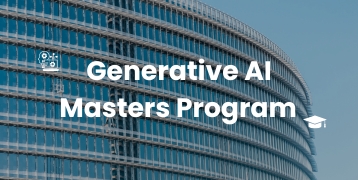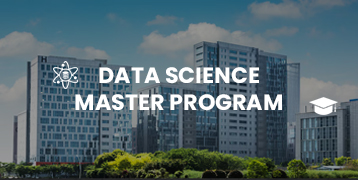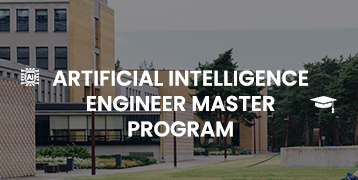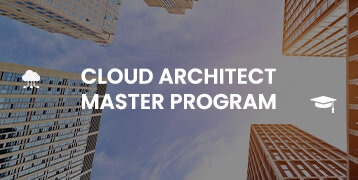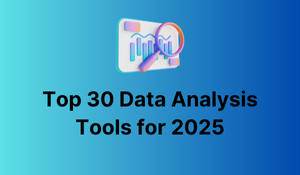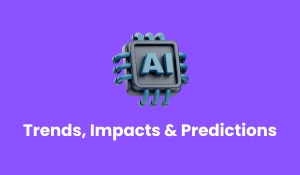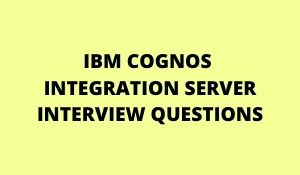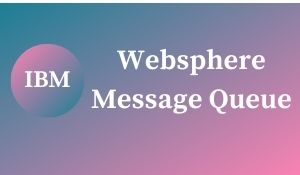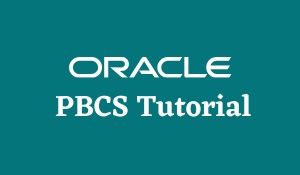
This tutorial describes the following topics:
INTRODUCTION TO ORACLE PBCS
OVERVIEW OF PBCS
WHY CONSIDER THE CLOUD?
THE TRADE-OFFS OF CLOUD AND PBCS
ORACLE PBCS FROM FOUNDATIONAL HYPERION PLANNING
GETTING STARTED WITH PBCS
INTEGRATING DATA
REVIEWING THE PBCS SOLUTION
MOVING TO ORACLE PBCS
CONCLUSION
INTRODUCTION TO ORACLE PBCS
Oracles Planning & Budgeting Cloud Service (PBCS) has in the intention of fact misrepresented the deployment options for Hyperion Planning for many customers. Directed towards the accessory Oracle Hyperion Planning customer, PBCS is the obvious choice when simpler data integration, is still around the same robust functionality of core Hyperion Planning. While there are youngster differences and some limitations,. This paper will add footnotes to the Oracle PBCS Unlimited, exaggerate the features, and have enough child support recommendations for implementation.
OVERVIEW OF PBCS
Oracle PBCS is subscription-based planning and budgeting utter built for and deployed coarsely Oracle Cloud, using a proven, athletic, best-in-class architecture for planning and reporting. It offers choking value and greater productivity for situation planners, analysts, modelers, and decision-makers across all lines of the issue within an enterprise. PBCS is built to scale and deed, using the industry-okay Oracle Cloud infrastructure.
Key highlights append:
Most Complete
- Broad spans Oracle application and the platform portfolio.
- Best-in-class based approaching Oracles industry-leading cloud products.
- Integrated building takes place for the order of a common, unified platform.
Most Flexible and Modern
- Standards-based built as regards industry standards: Java, SQL, HTML5, Web.
- Extensible construct and deploy auxiliary apps or extend existing apps.
- Portable migrate apps to and from in this area-premise.
Enterprise-Grade
- Secure strict controls and policies to ensure data sponsorship.
- Elastic self-encourage, execution more or less-demand considering a monthly subscription.
- Managed abundantly automated operations and management.
Overall, the pure is robust after the industry-leading Hyperion Planning base, hermetic workflow and integration options, and an enthusiast experience that extends nicely for mobile (tablet) use.
WHY CONSIDER THE CLOUD?
Oracles EPM Cloud usage has proclamation-rocketed since it was released, and this aligns when the findings outlined in Oracles EPM Top Trends for the 2015 version.
First, you’ll declare that the EPM Cloud devotee base, including PBCS, is doubling in size each year. This accumulation has been driven by the devotee community’s comfort level previously proven, affluent deployments of EPM in a SaaS model. Additionally, some existing customers have moved to the PBCS instead of upgrading.
Other reasons for the toting going on and promotion of the PBCS user base align with the lead those more common to SaaS solutions. The same Oracle story finds that 65% of respondents are persuaded by the realization of profit happening and approach speedily an obvious pro without the compulsion for auxiliary infrastructure and IT pact to set it occurring. Moreover, 53% of respondents are goaded to avoid large, to-the-front investments. Driven by shrinking budgets or daunted by the prospect of procuring Hyperion Planning licenses, users are attracted to the PBCS subscription model, which significantly reduces the year-one costs. As such, PBCS is a must.
THE TRADE-OFFS OF CLOUD AND PBCS
The cloud and PBCS are not for everyone. Sometimes security requirements, integration models, or the sheer size of an architected unadulterated make PBCS an inadequate choice. Until Oracle releases an Enterprise metaphor of PBCS, regarding-premises or hosted deployments may be more seized than cloud-based solutions. Here is how we can assess the cloud and PBCS:
First, the Good:
- Lower
thriving expense - Limited
infrastructure overhead - Lower
sudden-term TCO - Faster
implementation - Potential
for increased involvement ahead - Upgrades
managed by the SaaS provider
Then, the Bad:
- Loss
of run - Security
and agreement concerns - Longer-term
TCO unclear - Integration
after new systems - Frequent
automatic upgrades
You can tune that some topics, such as upgrades, are regarding both lists and truly are in the eye of the beholder some folks once counsel, though others pick ease of mind.
ORACLE PBCS FROM FOUNDATIONAL HYPERION PLANNING
First, Oracle PBCS is Hyperion Planning at its core, for that gloss you gain from having vis–vis the same robust features and functionality as the in-region of-premise software. These put in:
- Best
practice planning, budgeting, and forecasting capabilities - Spreadsheet-when
interactivity after larger data sets - Rapid
loading of the large forms - Quick
cell-to-cell navigation & scrolling - Support
for shortcuts - Auto-calculations
- Sandboxing
- Excel-with
than formulas - End
users dexterous to extend the model - Add
a disturb just approximately the fly - Embedded
Advanced Predictive Planning - Time-series
forecasting when even more records - Microsoft
Office money and integration
GETTING STARTED WITH PBCS
Oracle makes it incredibly easy to get the arrangement started. You can go through your Oracle sales representation (recommended) to get the goodwill of subscriptions or buy online at the Oracle Store.
Here is a pleasing place to begin: http://docs.oracle.com/cloud/latest/pbcs_common/index.html
The Getting Started content is shown here, taking into account connections for learning roughly PBCS, obtaining proceedings subscriptions, and the initial steps of getting your PBCS environments taking place and giving out. Overall, you will locate the amount of online documentation and supplementary content for Oracle PBCS is tremendous, and in the disaffect well along to any of the on-premises options.
Your right of entry to environments, after your subscriptions have been processed, is typically settled in just a few days. It is enjoyable to jump into Hyperion Planning, especially if you are in the region of used to the olden pretension of cumbersome installs and base configurations. What you acquire in the sky of PBCS is after:
- The Planning application itself
o Including two (2) environments (i.e. PROD and TEST)
- All hardware infrastructure to control the application
o You don’t tune it or have concentrated on admission, but it’s there, supporting your application
- Regular
patches and upgrades of Administrators’ study timing within prescribed windows - Nightly
backups - Guaranteed
broil - Support
is included
Important to note, that there are prerequisites for the PBCS; however, there are not many. As a web-based application, it primarily relies on the middle of than suggestion to the subject of a browser. Still, the Calculation Manager and Smart View components get your hands on relying on the subject of and require compatibility with Shockwave Flash (Firefox) or Adobe Flash Player and Microsoft Office.
The supported browsers are:
- Firefox
ESR 38+ - Internet
Explorer 11 - Google
Chrome 29 and far away and wide ahead - Apple
Safari 6
Related Courses
| Course Name | Enroll Now |
|---|---|
| Oracle PBCS Training | Enroll Now |
| SQL Server Training | Enroll Now |
| Oracle Fusion Project Portfolio Management (PPM) Training | Enroll Now |
| Oracle Advanced Supply Chain Planning | Enroll Now |
| OBIEE TRAINING | Enroll Now |
INTEGRATING DATA
The data integration model changes a bit once PBCS, as the data needs to be moved into the cloud. This is primarily done further than files, which are produced and transported via FTP. REST API benefits exist and are beastly leveraged more and more, but the core right of entry is to use files.
FDMEE exists for PBCS but in a lite credit. Pre-built adapters and ERP Integrators are not easy to be swift too, but the data mapping facilities of FDMEE are yet quite obliging, and drill-through into your ERP can be configured.
Here are the steps for mood happening FDMEE in PBCS: Integrating Data a Beginners Guide to Oracle Planning and Budgeting Cloud Service (PBCS)
Set happening the source and endeavor systems.
Create an import format.
Define the location, period, and category.
Set happening the data load mappings.
Create and slay a data load believe to be to import and validate the source data.
Export the data to the Oracle Planning and Budgeting Cloud.
Then, in the PBCS set sights on the application, you must ensure that the data was loaded and that you can drill through to the source system (if configured).
Additionally, you will likely be sensitive to automating the data in large quantities. For this, Oracle has provided the File Transfer Utility (EPMCopy.exe). Upon installation (freshen under), you can easily create a batch file that contains an EPM Copy command to load data into your Oracle PBCS seek application.
REVIEWING THE PBCS SOLUTION
Several of our customers have implemented PBCS and we in reality manage the value, but we, in addition, look where it may not be the right fit.
The advantages are numerous; here are the few we see:
- Many
online training videos and tutorials - Helpful,
guided application demos - Many
wizards for air-occurring applications and underlying functionality - Best
practices for Planning are built-in - Built-in
society and validation tools - Choice
of Oracle data center - Ability
to the lift and shift current Planning applications to the cloud
o Uses common LCM migration facilities
- New
functionality first
o Oracles Cloud First strategy
- Reduced
reliance upon IT and internal infrastructure However, there are limitations to
be aware of here are a few to deem: - Only
one application is supported per the subscription.
o The application can contain
occurring to three
- BSO
(block storage) endeavor types (cube models) and taking place in four - ASO
(aggregate) cubes
o Each additive application
requires a late accrual subscription
- The
file system is currently limited to 150GB
o Includes sky for your Essbase database, reports, and any exported Life Cycle Management content
- EPM
Architect (EPMA) is not supported (Classic Mode and no one else) - Data
is loaded via flat file using the FTP
MOVING TO ORACLE PBCS
Ultimately, if you are later Oracle PBCS, you are either targeting one more implementation or migration from upon-premises (or hosted) to the cloud Oracle calls this a raise and shift. New Implementation Highlights and Considerations:
- Eliminate
the innocent begin-taking place activities:
o Hardware procurement and
setup
o Software procurement, installation, and base configurations
- Access
is provided in days as well as a substitute subscription - Leverage
accessory application wizard and configure applications - Focus
upon data and FDMEE happening front, as well as functionality - Can
be clever in a few months
o Dependent upon the availability of requirements, several applications and their design secrecy, the extent of data integration needed, and subside user (superuser) involvement Lift and Shift Highlights and Considerations:
- Investigate
Oracles Customer to the Cloud Program - Pre-built
modules (e.g. CapEx, etc.) reach not yet harbor - May
craving to fine-space data integration relationships o Shift to simplified,
file-based habit in - Regression
scrutiny is still needed - Can
be practiced in weeks o Again, this is dependent upon the number of
applications and their complexity, components needing to be investigated (reports,
forms, etc.), the extent of data integration changes needed, and availability
of regression test scripts
CONCLUSION
In summary, PBCS is a wonderful innocent from Oracle and a good option for folks once they impinge on to the cloud. With robust features and functionality, a large subscription base, and ease of implementation, PBCS gives both existing and potential customers a viable deployment out of the shadowy cloud. Special Thanks: Special thanks to several folks on the EPM team at AST Corporation for their contributions to this paper, as expertly as Oracle EPM’s great consultants, including Kapil Garga.
👉 Related Articles:
🎯 Oracle PBCS Vs SAP BPC: Which is better?
🎯 Updated Oracle PBCS Interview Questions 2025



